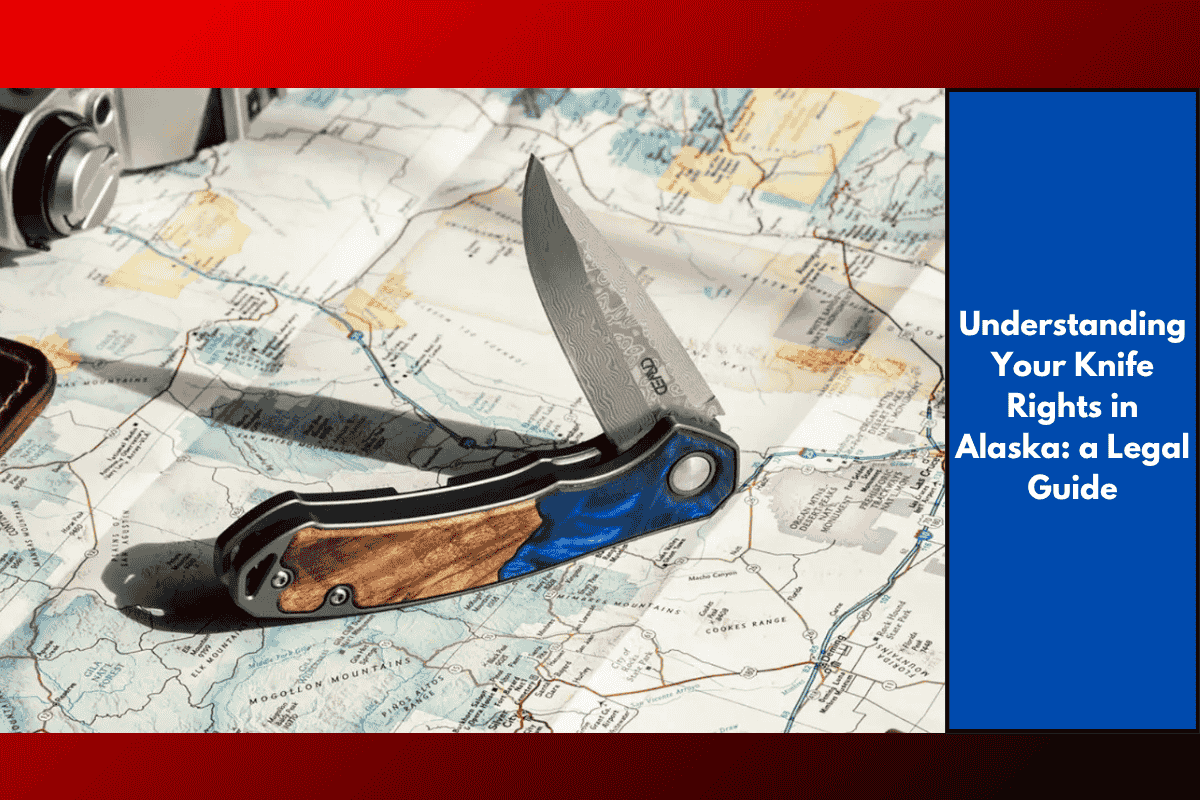Alaska, known for its vast wilderness and outdoor lifestyle, has laws that are tailored to ensure safety while also respecting personal freedom. For many, carrying a knife is not just about utility but is also tied to personal and cultural significance. Whether you’re an outdoors enthusiast, a hunter, or someone who needs a knife for everyday tasks, it’s important to understand your legal rights when it comes to carrying knives in Alaska.
Alaska’s Knife Laws: What You Need to Know
Alaska’s knife laws are quite clear but also flexible, reflecting the state’s unique lifestyle and outdoor environment. Unlike many states, Alaska doesn’t have a lot of specific restrictions on knives, but there are still rules you need to follow. The key thing to remember is that the legality of carrying a knife depends on the type of knife, where you’re carrying it, and the intent behind carrying it.
Types of Knives and Their Legal Status
In Alaska, different types of knives are treated differently based on their function and design. Here’s a breakdown of the most common types of knives and their legal status:
Fixed-Blade Knives: These are typically larger knives, often used for hunting or outdoor tasks. In Alaska, fixed-blade knives are generally legal to carry without restrictions, except in certain locations like schools or government buildings. You don’t need a special permit to carry them as long as you are not carrying them with the intent to use them for criminal activity.
Folding Knives: Folding knives, which are often used for everyday tasks, are also legal in Alaska. The same rules apply here: you can carry them without a permit, but they should be carried responsibly. You are not allowed to carry them concealed if you have an intent to use them for illegal purposes.
Automatic Knives: These knives, also known as switchblades, have a spring-loaded blade that opens at the push of a button. Alaska allows the possession and carry of automatic knives, but it’s important to understand that these knives are regulated in some public places, such as airports and federal property.
Throwing Knives: Throwing knives are legal in Alaska, but it’s important to use them responsibly. As with any knife, carrying them in public with no clear purpose can raise suspicion or be considered a threat.
Where You Can Carry Your Knife
While knives are legal to carry in many places in Alaska, there are specific restrictions that apply to certain areas:
Schools and Government Buildings: Like most states, knives are generally prohibited in schools and government buildings in Alaska. This includes both public and private schools, as well as other facilities like courthouses.
Public Places and Private Property: Carrying a knife in public places like parks, streets, or businesses is generally legal in Alaska, as long as you’re not carrying it with the intent to harm or threaten someone. However, property owners or businesses have the right to prohibit weapons on their premises, including knives.
Carrying Concealed Knives: Alaska does not have a specific law against carrying a concealed knife, as long as it is not being carried for the purpose of committing a crime. That said, it’s always advisable to be mindful of the size and visibility of your knife when out in public.
Intent and the Law
The intent behind carrying a knife plays a significant role in how the law is applied in Alaska. If you’re carrying a knife for legitimate reasons—such as outdoor activities, self-defense, or work—there’s typically no issue. However, if you’re caught carrying a knife with the intent to use it for criminal activities (such as threatening or injuring someone), you can face criminal charges, including assault or possession of a weapon with intent to harm.
Self-Defense and Knife Use
In Alaska, like in many other states, knives can legally be used in self-defense situations. However, the use of a knife must be reasonable and proportional to the threat you face. If you use a knife in a situation that goes beyond what is necessary for self-defense, you could be charged with assault or a similar crime. The key point here is that using a knife in self-defense should be a last resort, and it should be in response to an immediate threat.
Alaska has relatively relaxed knife laws compared to many other states, but that doesn’t mean you can carry a knife without understanding the rules. The key factors that affect the legality of carrying a knife are the type of knife, the location, and your intent. It’s important to be aware of where knives are prohibited and to always carry your knife responsibly. Whether you’re using a knife for outdoor activities or just need one for everyday tasks, knowing the law helps ensure you’re staying within legal boundaries while respecting your personal rights.
SOURCES
[1] https://mywaynecountynow.com/understanding-your-knife-rights-in-alaska-a-legal-guide/
[2] https://nobliecustomknives.com/us-knife-laws/alaska-knife-laws/
[3] https://doitbylaw.com/alaska-knife-laws/
[4] https://edc.ninja/alaska-knife-laws/
[5] https://www.akti.org/state-knife-laws/alaska/














